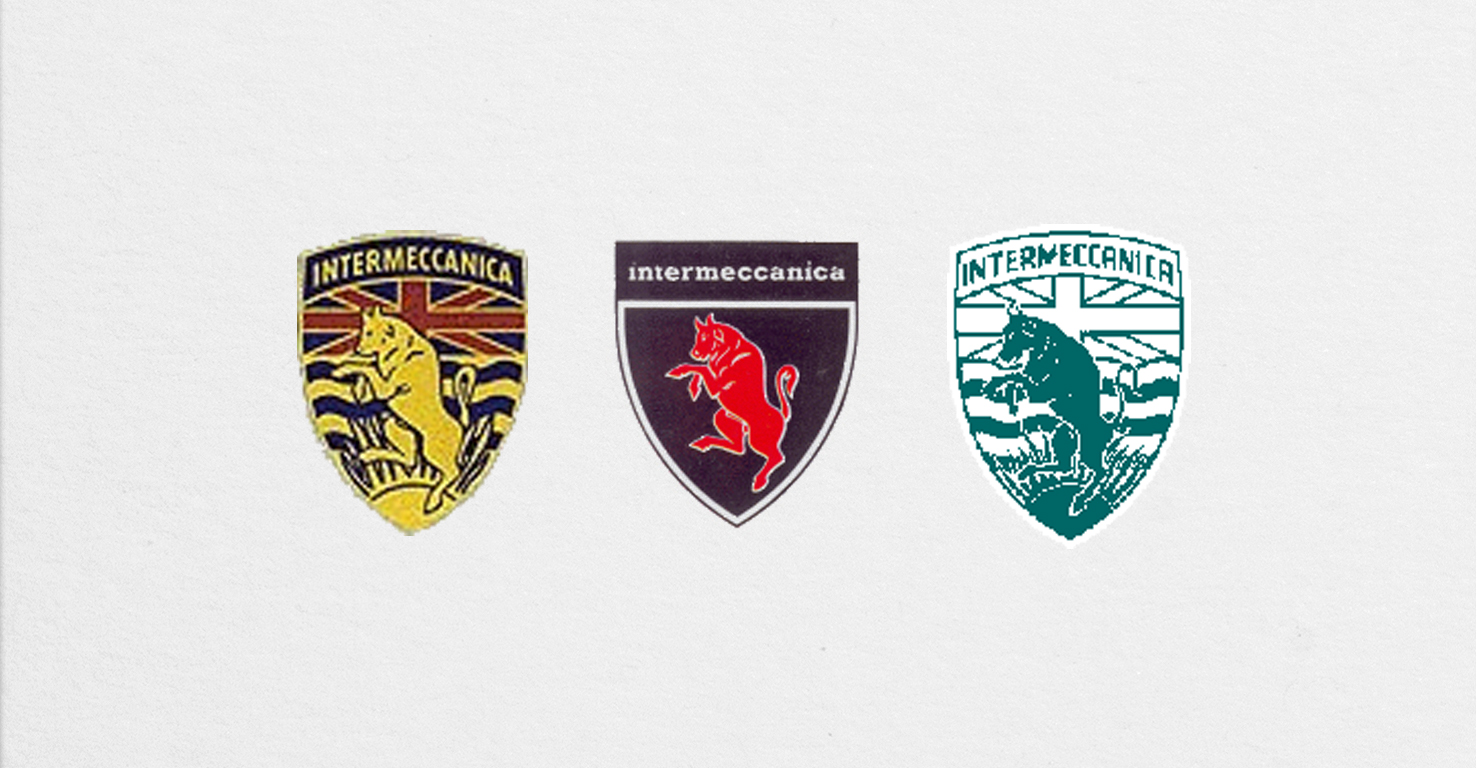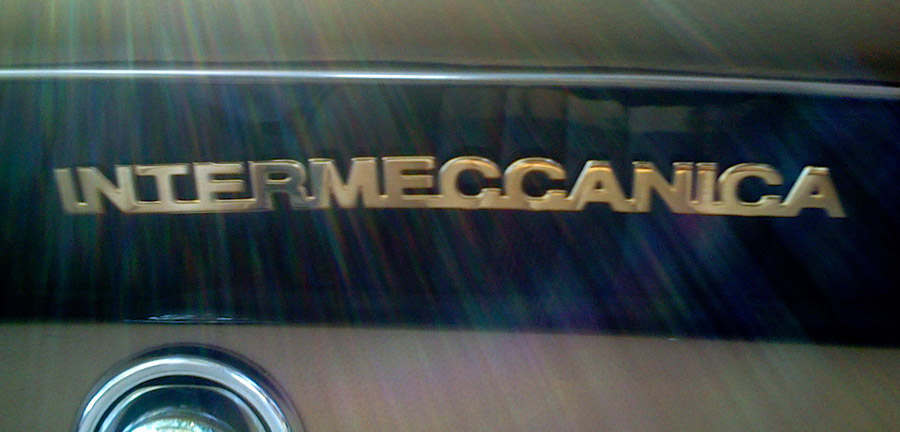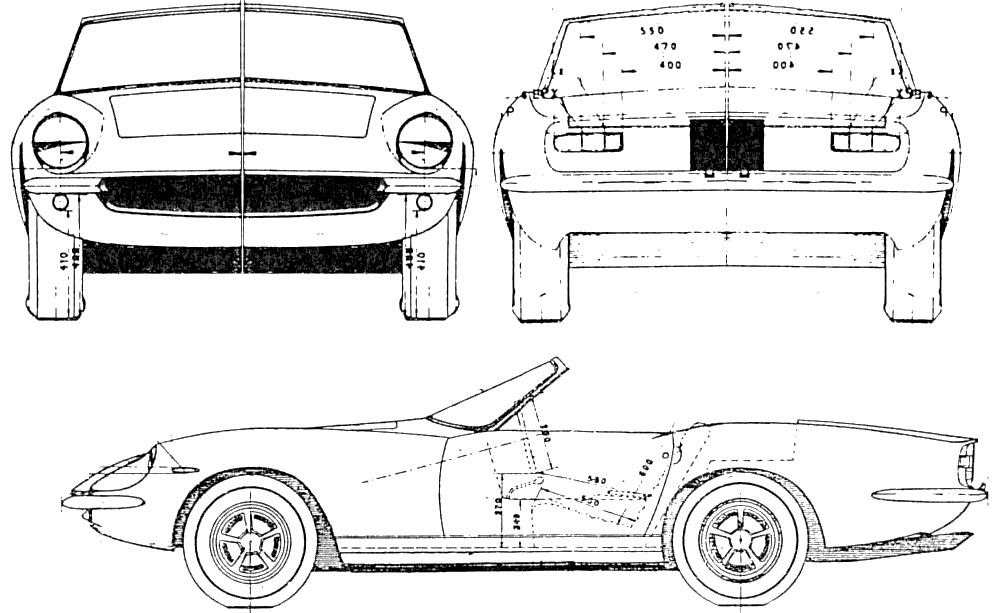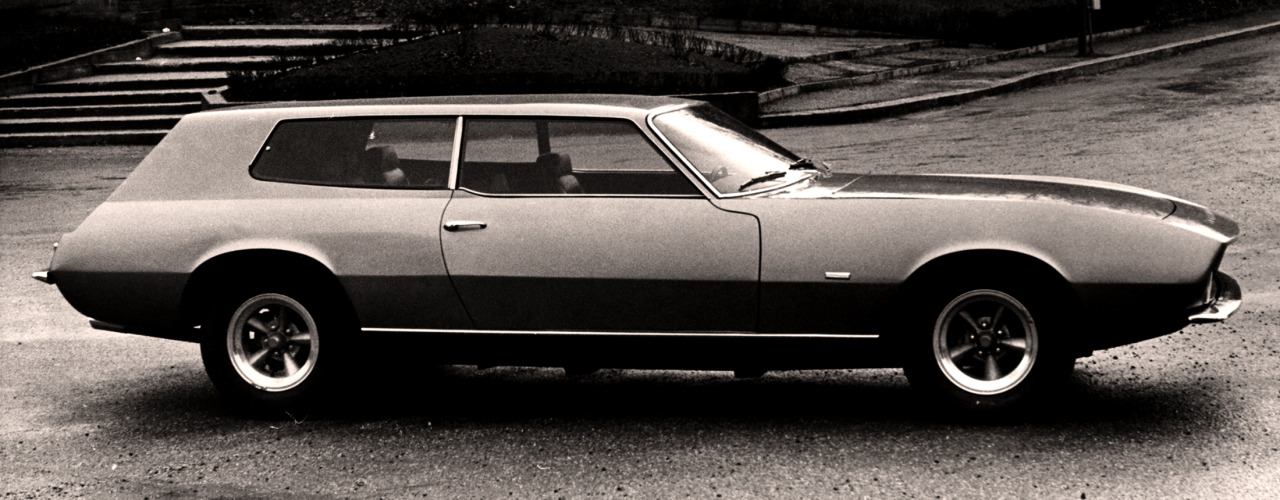Founded in Turin, Italy in 1959.
The First project, speed equipment kits for Renault, Simca, Peugeot, DKW etc. Kits consisted of dual throat carburetors, intake manifolds, high performance cams, oil filters etc.
A full line of free-flow exhaust systems was developed for 50 or more European cars in cooperation with an Italian tube company. These were marketed under the Intermeccanica label everywhere but North America, and sold particularly well in South Africa. In North America they were distributed by STEBRO, who eventually made the systems themselves.
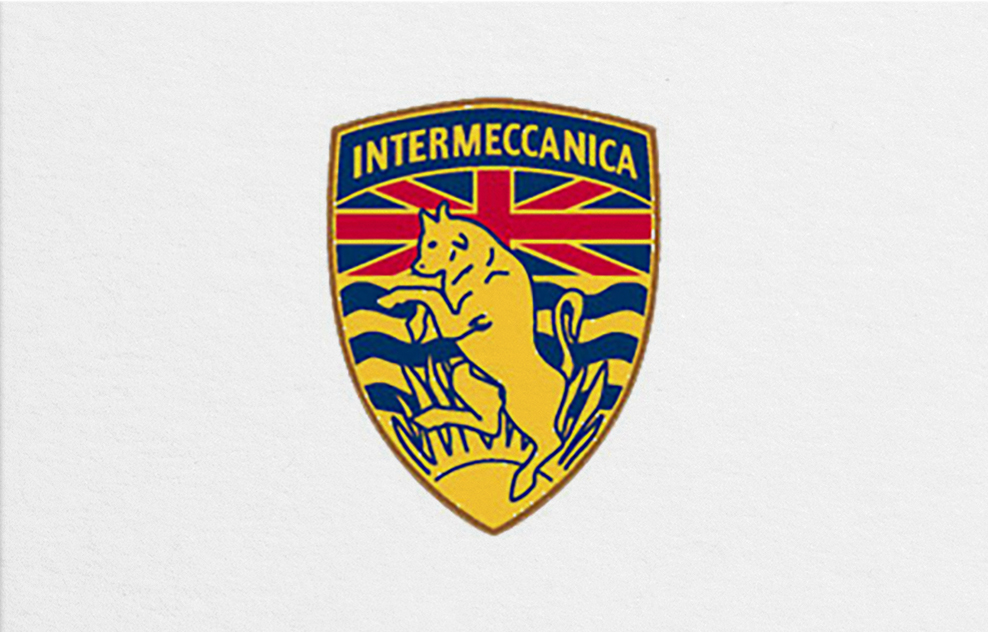
1960.
From modifications of Peugeot engines a Formula Junior de-stroked, counterweighted engine was developed, using the facilities of Conrero. A Formula Junior racing car, one of the first with rear engine, was also built and sold. When the English Formula Juniors with Ford based engines in the rear came out a few months later, the IM was outclassed. However about ten engines were sold.
A small aluminum two-seater coupe was developed by Intermeccanica, based on the Steyr-Daimler-Puch 500 cc car. The Puch was a hybrid, with part Fiat 500 chassis and body and part Puch mechanicals, namely a 500 cc air cooled opposed twin engine, special brakes, transmission etc. After a presentation of the prototype car to Steyr-Daimler-Puch AG in Graz, Austria, a series of these small coupes were built, 21 in number. Some were touring cars, and some lightened for racing. The IMP won the 500cc class one year at Nurburgring. Everyone had great fun!
1961-1962.
The Apollo GT was developed by Intermeccanica for a company based in San Francisco (actually Oakland). This was at first a coupe, the prototype in aluminum. Further production cars were in steel, which used the then new Buick aluminum V8 engine and all Buick running gear. The cars were upholstered in leather, used Borrani wire wheels etc. Altogether 90 coupes and later 11 convertible APOLLO’s were built between 1961 and 1965.
1963.
Intermeccanica exhibited the APOLLO coupe at the Turin Automobile Show.
1965.
A prototype Apollo 2+2 was built and exhibited at the New York Automobile Show. It was judged best of show. A second 2+2 was built later.
A Mustang Station Wagon prototype was built for the W. J. Thompson advertising agency. The car was presented as an idea car to Ford Motor Company.
A prototype English Ford 106E based car was built, called the Veltro.
A new project was started with Jack Griffith of Long Island, N.Y. for a larger production all steel car with more financing. Tooling was built and production started. First few cars were shipped, when Jack Griffith’s company closed. A new customer, Steve Wilder, decided to take over the project, called the cars Omega and had them assembled by Holman and Moody in North Carolina. A total of 33 of these were delivered to the US.
1966.
It became obvious at this stage that the only way to pursue the construction of cars was if the cars left Italy fully assembled and running. In cooperation with an Italian bank, Credito Italiano, Intermeccanica found a distributor in Genser Forman of New Jersey, and finally production and sales reached the 100 to 120 cars per year level. These cars were Ford V8 powered, with Ford running gear.
The distribution was occasionally changed, but up until 1970 about 500 cars were built, first called Torino and later Italia. (Ford had the name Torino registered). The Italia was eventually produced as both a coupe and a very successful convertible.
A Corvair based all steel prototype called the Phoenix was built for Fitch of Lime Rock, Connecticut.
1967-1969.
Eleven Murena sports wagons with Ford 429 Hi Performance engines were built. These luxury packages (four leather seats, bars with cut glass, deep pile carpets, aircraft switches etc.) were built, again as running cars, for an importer in New York. The Murenas were a great hit with the entertainment group in California.
1969.
At the 1969 April New York Automobile Show, Intermeccanica had cars on three different stands!
For the 1969 Turin Automobile Show, a modified Italia, which conformed to Italian requirements, plus a few added features such as a rear movable airfoil, was built. It was called the Italia IMX. It remained a prototype.
1969-1970.
Italias started to sell in Europe, especially in Germany through the newly appointed distributor, Erich Bitter.
1970.
A Centaur, a one-off two-door sedan based on a Corvette, was built for a doctor from the Mid-West.
Opel, GM subsidiary in Germany, contacted Intermeccanica and a whole new project of a car, using the Opel mechanicals, the Chevrolet 350 engine, hydramatic transmission, DeDion rear end, disc brakes (parts used in the Opel Diplomat) was developed by Intermeccanica. The new car was the Indra.
1971.
The Indra was presented at the Geneva Automobile Show and was a runaway success.
1971-1974.
Between 1971 and 1974, 125 Indras in three variants, convertible, notchback coupe and fastback coupe were developed and built. In 1973 the Indra was presented at the New York Automobile Show, again with many orders taken and distributorship for U.S. set up. At this stage GM changed policy and stopped supplying both the Chevrolet engines and the Opel parts, as well as advising their Opel dealers in Germany that they were no longer to sell the INDRAs, with disastrous results for Intermeccanica. Opel came out with their own copy of the Indra, built by Bauer in Germany and sold by our distributor Erich Bitter under his name, the Bitter CD.
1974-1975.
A series of replica SS Jaguars were assembled by Intermeccanica for a U.S. customer. These were fiberglass replicas, called Squires.
1975.
Two prototype Ford engined Indras were built, one shipped to the U. S. with all equipment for Indra construction in the U. S. This project was developed and initially financed by the Economic Development Council and the City of San Bernardino, California. About a month after Frank Reisner and family arrived in California, the project was canceled.
1975-1976.
A Porsche Speedster replica was developed by Frank Reisner, and tooling made, as well as a prototype, in Los Angeles.
1976-1979.
Automobili Intermeccanica was formed in partnership between Frank Reisner and Tony Baumgartner in Santa Ana, California, to build Speedsters. About 600 Speedsters were constructed. Tony Baumgartner bought out Frank Reisner’s 50% share of Automobili Intermeccanica and later sold the Speedster project and equipment to Classic Motor Carriages in Florida.
1979-1980.
Tooling was developed by Frank Reisner for the construction of a neo-classic based on the Checker chassis, with lines inspired by the Mercedes Erdmann Rossi model and the Duesenberg. This was a big, 129 inch wheelbase car. When the economy in California took a downturn and the market for this kind of car collapsed, the partnership could not come up with the financing required. Its code name was Lexington.
1981.
Frank Reisner developed a Roadster RS model based on the 1959 Porsche Convertible “D” and made full tooling for this car. In October Frank Reisner visited Vancouver and made an agreement with local investors, one an old Italia importer from Montreal, to transfer production of the Roadster RS to Vancouver.
1982-1985.
Intermeccanica International Inc. started production of the Roadster RS and developed markets in Canada, the U. S. and Japan.
1985.
Intermeccanica developed a new tubular chassis for the Roadster RS to replace the original VW pan.
1986.
Intermeccanica refined the Roadster RS, adding first simple flares, later modified nose and flares. Also developed was a new tubular steel chassis for the Roadster that uses all the mechanical parts of a 6 cylinder Porsche 911. A hardtop was also added to either model.
1995-1996.
A new project, a replica of a “Kubelwagen”, a Porsche designed VW jeep used in World War II, was undertaken and production was initiated.
2001.
In October of 2001 Frank A. Reisner died of complications due to sarcoidosis. His loss is deeply felt by the whole crew at Intermeccanica. Henry Reisner, Frank’s son who had always worked at Intermeccanica, part time during high school and university, and full time since, has taken over as president and currently is working on increasing production of Intermeccanica Roadsters, Speedsters and Kubelwagens destined for the US, Canada and Japan.
(source: Intermeccanica)
